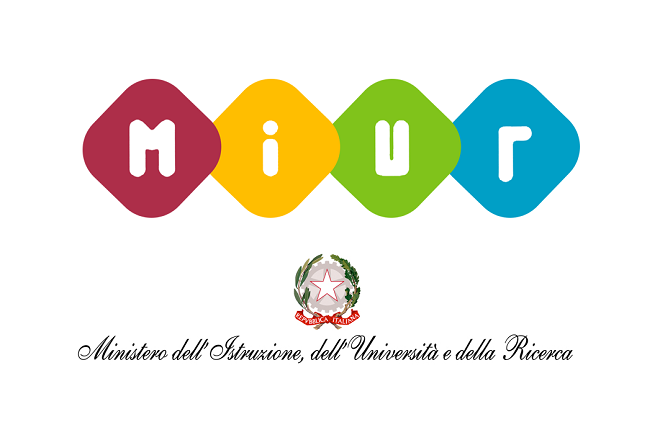Gabriella Mazzotta
 | Gabriella MazzottaAssociate Professor - Department of BiologyPhone: 049/8276210 |
Research description
My research activity mainly focuses on the dissection of the genetic basis of circadian rhythmicity in the model organism Drosophila melanogaster.
Three essential research lines are ongoing in the lab:
1) Multiple roles of the CRYPTOCHROME circadian photoreceptor in the central and peripheral clocks of Drosophila melanogaster
Drosophila CRY functions as the primary blue light photopigment that mediates circadian responses to light; however, CRY appears to be an integral component of the molecular clock in peripheral tissues, including the compound eyes, where we have recently shown to play new roles that do not depend on light activation. The nature of the transduction signaling that regulate these non-photoreceptor roles remains largely unknown, and we are currently investigating the hypothesis of a Ca++/CaM-mediated signaling mechanism, a feature possibly shared by mammals.
2) Heterogeneous nuclear ribonucleoproteins (hnRNPs) involvement in the regulation of circadian rhythms of Drosophila
Circadian oscillations are essentially generated by an evolutionary conserved transcriptional-translational feedback system (TTFL); however, post-transcriptional, translational and post-translational mechanisms have also evolved to adjust and consolidate the proper pace of the clock. heterogeneous nuclear ribonucleoproteins (hnRNPs) are key players in several post-transcriptional processes and disrupted regulation of hnRNPs correlates with a variety of human diseases. Our interest is focused on Hrb87F is the fly homologue of the of hnRNPA/B protein family members, known to regulate the majority of cellular RNAs. Hrb87F was linked to the circadian rhythmicity of Drosophila, and we are now studying the possible involvement of this hnRNP in the post-transcriptional control of the circadian clock in Drosophila, characterizing its human counterparts and defining their possible link to the circadian clock.
3) Dissecting the mechanisms linking the circadian clock to neurodegeneration, by using Drosophila as model organism
Although circadian disturbances are extremely common and early signs in many neurodegenerative disorders including Parkinson's Disease (PD), it is still unclear whether circadian disruption can influence the pathogenesis of PD and therefore be a risk factor for developing the disease. Studies on animal models have suggested that the circadian disruption observed in PD is not just a secondary phenomenon but can rather be a contributing factor to its pathogenesis.
We are interested in dissecting the mechanisms by which circadian clock influences the onset and progression of neurodegenerative disorders. By using Drosophila, an excellent model in research on PD, we are focusing on the effects of light and circadian entrainment on mitochondrial dysfunction, to identify new potential environmental factors contributing to the development of the disease.
Relevant publications
Cusumano P, Carbognin E, Caccin L, Damulewicz M, Puricella A, Specchia V, Bozzetti MP, Costa R and Mazzotta GM (2019). The RNA helicase BELLE is involved in circadian rhythmicity and in transposons regulation in Drosophila melanogaster. Front Physiol. Feb 20;10:133. doi: 10.3389/fphys.2019.00133
Mazzotta GM, Bellanda M, Minervini G, Damulewicz M, Cusumano P, Aufiero S, Stefani M, Mammi S, Costa R and Tosatto S (2018). Calmodulin enhances Cryptochrome binding to INAD in Drosophila photoreceptors. Frontiers in Molecular Neuroscience. 11:280. doi:10.3389/fnmol.2018.00280
Schlichting M, ... Mazzotta GM*, Helfrich-Förster C* (2018). Cryptochrome interacts with actin and enhances eye-mediated light sensitivity of the circadian clock in Drosophila melanogaster. Frontiers in Mol Neurosci 11:238. doi: 10.3389/fnmol.2018.00238. (* Co-corresponding Author)
Cusumano P, Biscontin A, Sandrelli F, Mazzotta GM, Tregnago C, De Pittà C and Costa R (2018). Modulation of miR-210 alters phasing of circadian locomotor activity and impairs projections of PDF clock neurons in Drosophila melanogaster. Plos Genetics 14(7):e1007500. doi: 10.1371/journal.pgen.1007500
Damulewicz M, Mazzotta GM, Sartori E, Rosato E, Costa R, Pyza EM. (2017). Cryptochrome is a regulator of synaptic plasticity in the visual system of Drosophila melanogaster. Front Mol Neurosci. 10:165. doi: 10.3389/fnmol.2017.00165
Montelli S*, Mazzotta G*, Vanin S, Caccin L, Corrà S, De Pittà C, Boothroyd C, Green EW, Kyriacou CP, Costa R (2015). period and timeless mRNA splicing profiles under natural conditions in Drosophila melanogaster. J of Biol Rhythms 30: 217–27. doi:10.1177/0748730415583575. (* Equally contributed)
Mazzotta G, Rossi A, Leonardi E, Mason M, Bertolucci C, Caccin L, Spolaore B, Martin Aj, Schlichting M, Grebler R, Helfrich- Förster C, Mammi S, Costa R, Tosatto Sc (2013). Fly cryptochrome and the visual system. Proc Natl Acad Sci USA 110: 6163-8. doi: 10.1073/pnas.1212317110
Eelderink-Chen Z, Mazzotta GM, Sturre M, Bosman J, Roenneberg T, Merrow M (2010). A circadian clock in Saccharomyces cerevisiae. Proc Natl Acad Sci USA 107: 2043-7. doi: 10.1073/pnas.0907902107
Sandrelli F, Tauber E, Pegoraro M, Mazzotta GM, Cisotto P, Landskron J, Stanewsky R, Piccin A, Rosato E, Zordan M, Costa R, Kyriacou CP (2007). A molecular basis for natural selection at the timeless locus in Drosophila melanogaster. Science 316: 1898-900
Hemsley MJ*, Mazzotta M.*, Mason M, Dissel S, Toppo S, Pagano MA, Sandrelli F, Meggio F, Rosato E, Costa R, Tosatto SCE (2007). Linear motifs in the C-terminus of D. melanogaster cryptochrome. Biochem Biophys Res Commun 355: 531-7. (* Equally contributed)
Fundings






